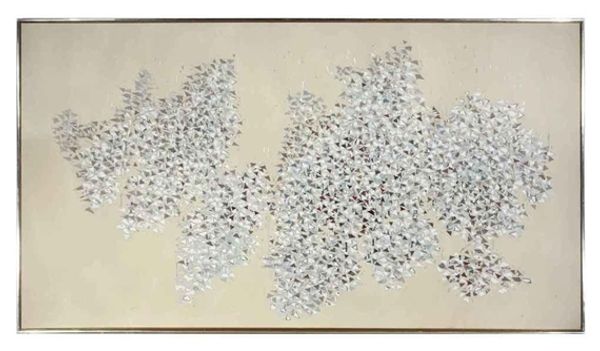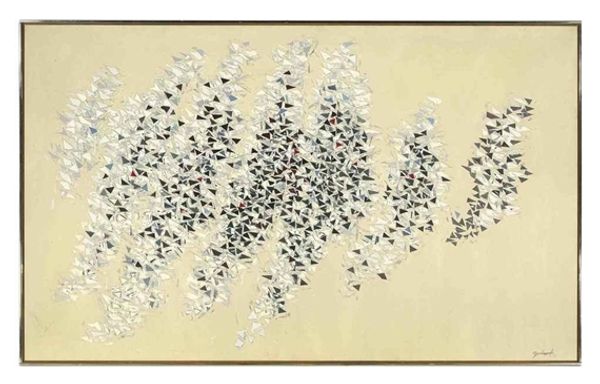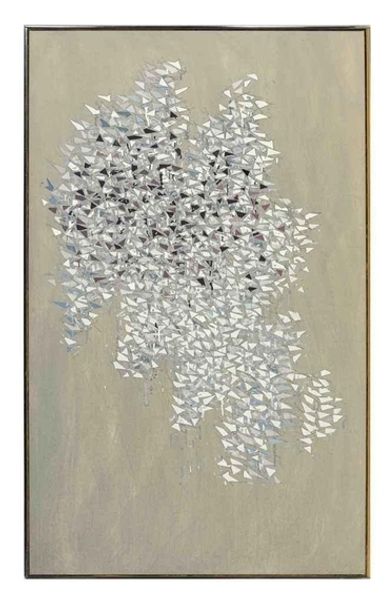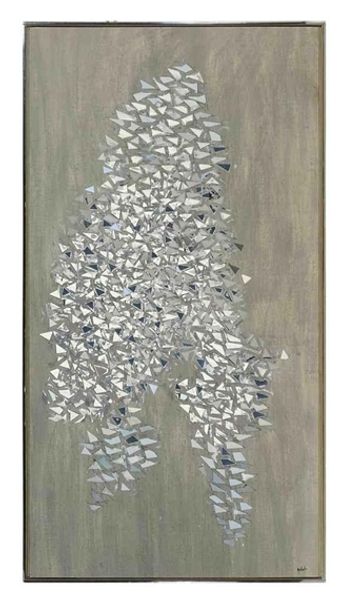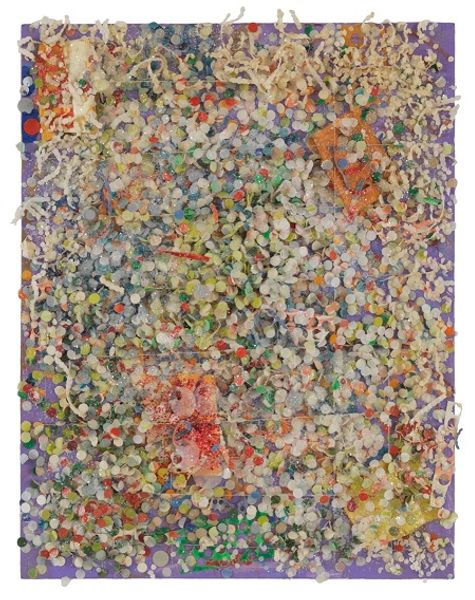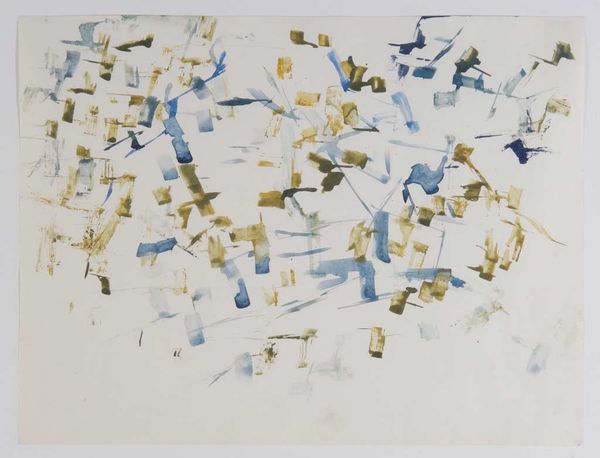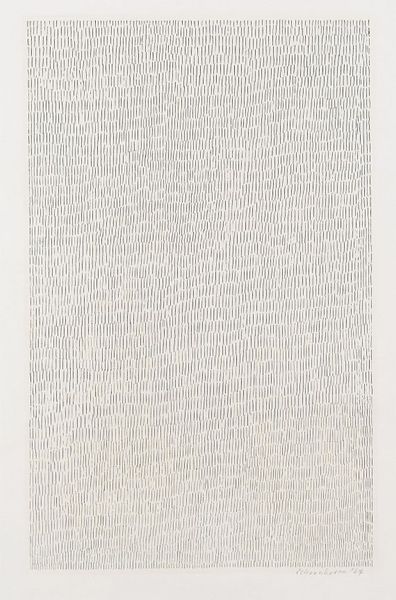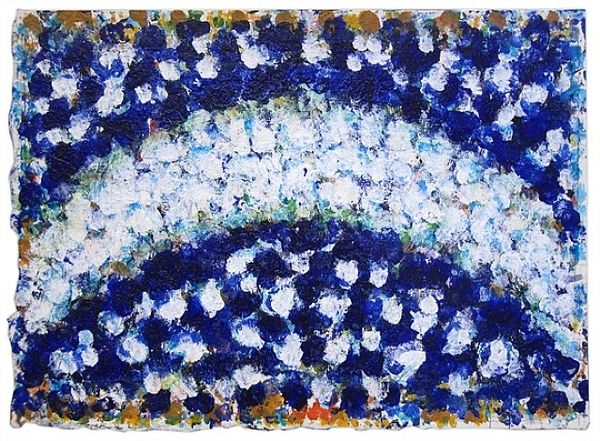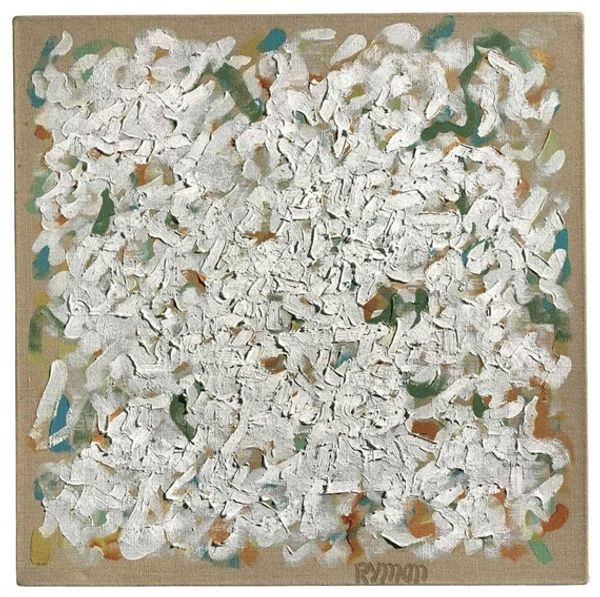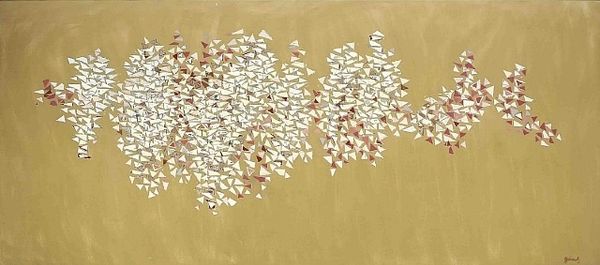
Copyright: Robert Goodnough,Fair Use
Editor: This is Robert Goodnough's "Growth and Development," painted in 1984 using acrylic. I'm really drawn to how the repeated triangles almost look like cells dividing under a microscope, hence the name I suppose, but what else do you notice? Curator: What strikes me is the intense labor involved. Imagine the artist, repeatedly applying those acrylic triangles. It's a process bordering on the industrial, yet completely handmade. This tension between mass production and the individual maker is critical to understanding the piece. It invites us to reflect upon how art and craft were classified during the latter part of the twentieth century, which Goodnough clearly engages. Editor: So you see the materiality and process as central to its meaning? The way it's made is just as important as, say, its visual impact? Curator: Absolutely. Think about the beige canvas—it's almost utilitarian. Then these shimmering acrylic triangles interrupt its supposed mundaneness, disrupting any hierarchy between what's considered high art and 'mere' decoration. What choices regarding materiality do you feel emphasize a critique of that hierarchy? Editor: Maybe the paint itself? Acrylic feels like a deliberate choice— a 'modern' material, not something traditional like oil paint, hinting that mass produced, and commercialized paint serves this concept too. Curator: Exactly! Its very commonness pushes against notions of artistic preciousness. "Growth and Development" becomes less about the artist's genius and more about exploring our relationship to the manufactured world. The way these materials are organized together to create such beautiful and mesmerizing patterns helps bridge that gap, no? Editor: Definitely! Now, I see how Goodnough questions those rigid definitions of ‘art’ versus ‘craft’ using such meticulous construction out of such plain supplies. Curator: And that very questioning, made manifest through material and process, becomes the work's core statement.
Comments
No comments
Be the first to comment and join the conversation on the ultimate creative platform.
